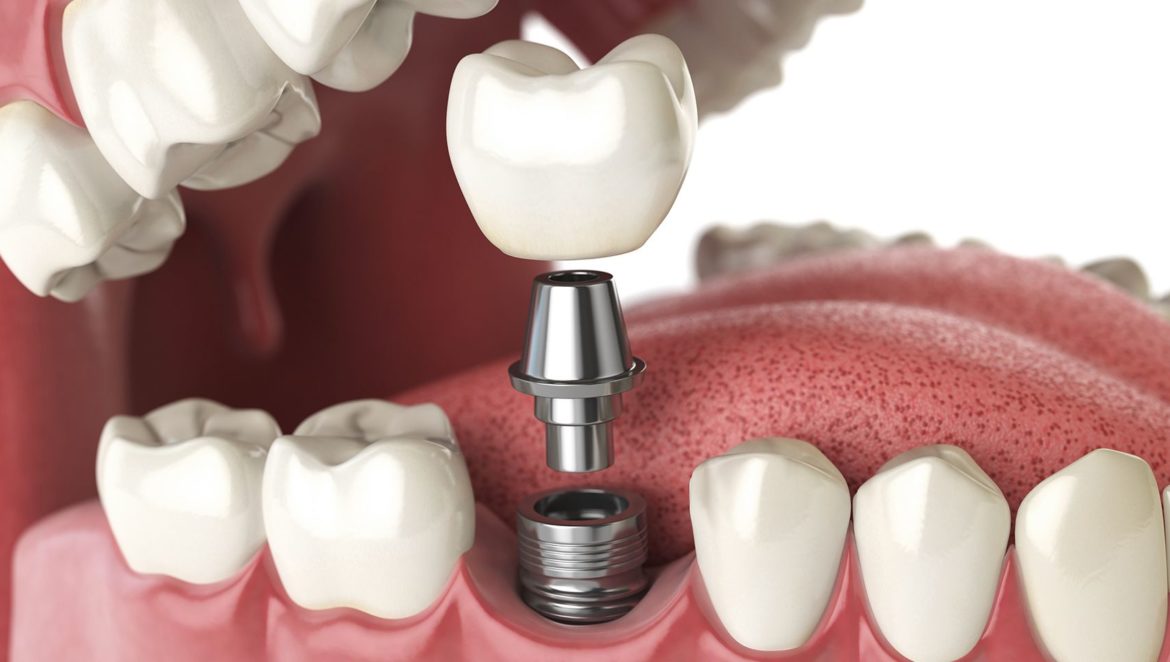Dental implants are the only second best to natural teeth. If you are missing one or more teeth, a dental implant can replace your tooth and preserve your jaw and face, returning your natural smile. Speak with your dentist to determine what treatment plan is best for you, but if you are in good health, have healthy oral tissues and are missing one or multiple teeth, dental implants are a great solution for you.
Dental implants offer a permanent solution to missing teeth. permanently to the jaw, protecting your existing teeth, preserving the existing tissue and stimulating more bone growth. They also do not require reducing the amount of healthy tooth on surrounding teeth like how bridgework requires. Despite the potential need for multiple office visits and the sometimes large upfront costs, a dental implant is the best solution to fully replacing one or more missing or lost teeth, as they last for a lifetime, unlike bridges or dentures which often need to be replaced every five to ten years.
If your dentures keep slipping, if they click constantly, if they prevent you from speaking like how you used to, if you are embarrassed by having to remove them to clean them, if you are frustrated over having to deal with messy pastes and adhesives, if you are tired of not seeing your natural smile anymore, then consider dental implants. According to WebMd.com, dental implants come with a ninety-eight percent success rate. With proper care of your oral health, an implant can last your lifetime.
Because a bridge or denture needs more replacements, it means more visits to the dentist’s office, more dealing with sometimes obstinate insurance, more money spent to upkeep your oral health, and ultimately more headaches and inconveniences.
If you ignore a missing tooth for too long it can dramatically change the look of your face. A missing tooth can actually result in bone loss, which will severely impact your bite and can likely causing pain when chewing. It can also result in wearing down and damaging your other healthy teeth. A dental implant is so like a natural tooth that you may even forget it is there. Because it is anchored into the jaw, you won’t experience any slippage during eating or talking, and you’ll never have to remove dentures for cleaning or use adhesives to keep them in place. A dental implant is like having your missing tooth back.
What is the process like?
Understanding the process of what a typical placement of a dental implant looks like can help you make a decision if the process is right for you.- The first step is an assessment by your dentist to determine whether or not your jaw has enough bone structure to support the implant. If there is not enough available structure or if your jaw is too soft you may require a bone graft to be performed in order for the site to be strengthened and not fail when the implant is installed.
- A bone graft is a procedure in which some bone tissue is taken from one part of the body and then grafted onto another part of the body. Commonly this area is the hip. This will strengthen the graft site and if this procedure is needed, it will require you spend some months recovering in order to allow for recovery as your jawbone to grow before the implant can be placed.
- The next step is to install the actual implant itself. The implant is a screw-like metal rod, generally made from aluminum. The surgery is an outpatient surgery done with a type of anesthesia. There are a few forms to choose from, such as local, sedation or a general anesthesia. Each one has different recovery times, so be sure to have somebody to take you home so you can spend the day resting.
- After a period of recovery, the abutment will be placed. The abutment is the part of the implant on which the crown will sit. Some cases the abutment can be placed at the same time as the implant.
- Next, you will have to spend several months healing and recovering. In this recovery time, you are getting the bone to grow around the implant to secure in place. This is what gives an implant its longevity and its strength. After the months spent healing, you will have a mold taken of your jaw and mouth and a crown created.
- Congratulations! You have a new tooth!

